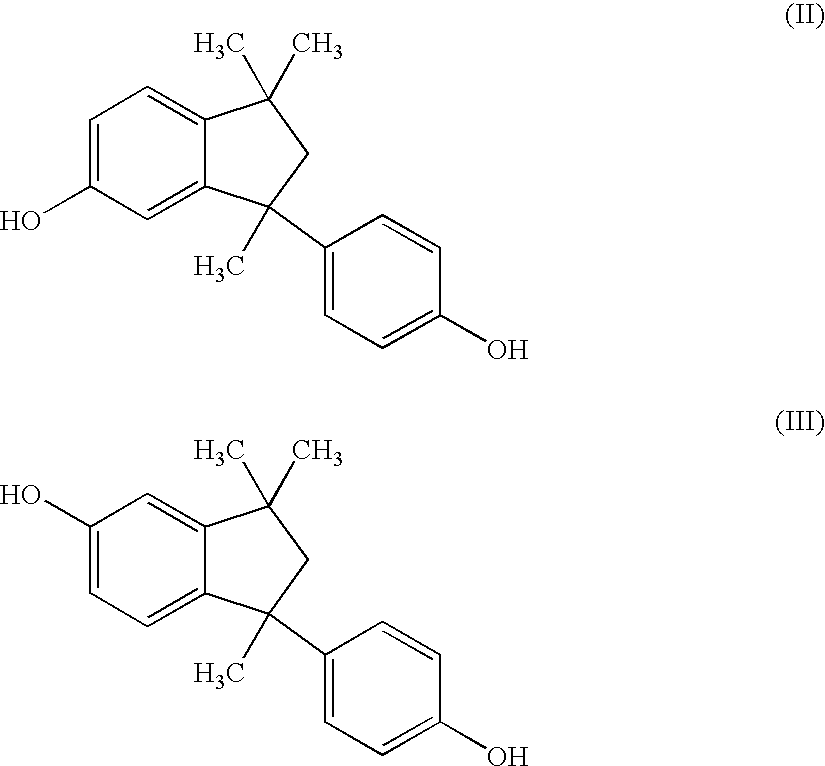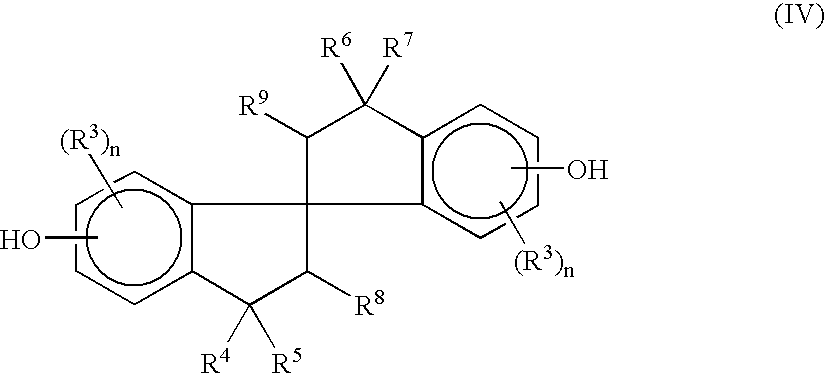Weatherable multilayer articles and method for their preparation
a multi-layer resin and weathering technology, applied in the direction of synthetic resin layered products, turning machines, polyurea/polyurethane coatings, etc., can solve the problems of long-term color instability of resinous articles, detracting from its transparency and attractiveness, yellowing of polymer resin, etc., and achieve excellent adhesion
- Summary
- Abstract
- Description
- Claims
- Application Information
AI Technical Summary
Benefits of technology
Problems solved by technology
Method used
Image
Examples
examples 4-5
[0067] Laminates of copolyestercarbonate-polycarbonate film assembly onto cleaned and chemical conversion coated steel with PU tie-layer: A laminate was prepared according to Examples 1-3 with copolyestercarbonate-polycarbonate film assembly onto a cold-roll steel test panel (cleaning and chemical conversion pretreated) obtained from ACT Laboratories (ACT # APR 32488) using PU adhesives. The adhesion results are shown in Table 2.
2TABLE 2 Molding Molding Peel temp. time force Failure Example Adhesive (.degree. C.) (min.) (N / m) mode 4 ARALDITE 100 30 2802 Interfacial 2042 PU / steel 5 ARALDITE 100 10 2101 Interfacial 2040 PU / steel
[0068] In each example the adhesion strength of the copolyestercarbonate-polycarbonate film assembly to the metal substrate was found to be excellent.
examples 6-7
[0069] Laminates of copolyestercarbonate-polycarbonate film assembly onto SMC with PU tie-layer: Smooth surface, class "A" SMC was received from the Budd Company (Budd product #DSM-971) and comprised unsaturated polyester resin with curing agents and fillers. SMC prepreg was cured into a large panel at 149.degree. C. and 8273 kilopascals for 90 seconds. Test panels of dimension four-inches-by-six-inches were cut from the molded SMC panels and were cleaned with deionized water and dried. A laminate was prepared according to Examples 1-3 with copolyestercarbonate-polycarbonate film assembly onto the SMC test panel using PU adhesives. The adhesion results are shown in Table 3.
3TABLE 3 Molding Molding Peel temp. time force Failure Example Adhesive (.degree. C.) (min.) (N / m) mode 6 ARALDITE 100 30 5954 Interfacial 2042 PU / SMC 7 ARALDITE 100 10 7005 Cohesive 2040PU
[0070] In each example the adhesion strength of the copolyestercarbonate-polycarbonate film assembly to the cured thermoset su...
examples 8-9
[0071] Laminates of copolyestercarbonate-polycarbonate film assembly onto TSN with PU tie-layer: A TSN formulation was cured into a twelve-inch-by-twelve-inch panel at 150.degree. C. for 4 minutes under 6894 kilopascals pressure. Test panels of four-inch-by-six-inch dimensions were cut from the molded TSN panels and were cleaned with deionized water and dried. A laminate was prepared according to Examples 1-3 with copolyestercarbonate-polycarbonate film assembly onto the TSN test panel using PU adhesives. The adhesion results are shown in Table 4.
4TABLE 4 Molding Molding Peel temp. time force Failure Example Adhesive (.degree. C.) (min.) (N / m) mode 8 ARALDITE 100 30 2802 Interfacial 2042 PU / TSN 9 ARALDITE 100 10 2627 Interfacial 2040PU / TSN
[0072] In each example the adhesion strength of the copolyestercarbonate-polycarbonate film assembly to the cured thermoset substrate was found to be excellent.
PUM
| Property | Measurement | Unit |
|---|---|---|
| thicknesses | aaaaa | aaaaa |
| temperature | aaaaa | aaaaa |
| thickness | aaaaa | aaaaa |
Abstract
Description
Claims
Application Information
 Login to View More
Login to View More - R&D
- Intellectual Property
- Life Sciences
- Materials
- Tech Scout
- Unparalleled Data Quality
- Higher Quality Content
- 60% Fewer Hallucinations
Browse by: Latest US Patents, China's latest patents, Technical Efficacy Thesaurus, Application Domain, Technology Topic, Popular Technical Reports.
© 2025 PatSnap. All rights reserved.Legal|Privacy policy|Modern Slavery Act Transparency Statement|Sitemap|About US| Contact US: help@patsnap.com



